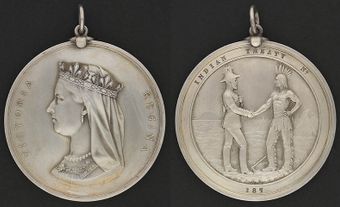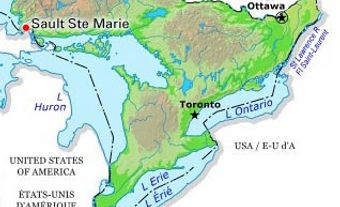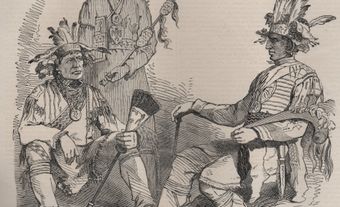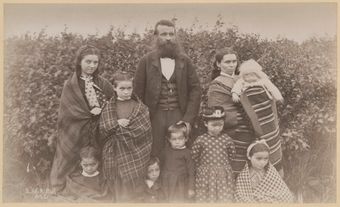
Shingwaukonse (Chingwackonce), Nebenaigoching (Nabunagoging) and Menissinowenninne.
History
Shingwaukonse joined the British during the War of 1812, but afterward promoted harmony between the Ojibwa (Ojibwe) and the American government. In 1832, he requested that Lt-Governor Colborne help establish a settlement for Indigenous people near Sault Ste Marie. Alongside Anishinaabeg Ogama (leader) Nebenaigoching, who may have been his son-in-law through his daughter, Annie Shingwauk, Shingwaukonse fought for the rights and lands of his people in the 1840s and 1850s.
For instance, with Allan Macdonnell, a mineral speculator and lawyer, Shingwaukonse devised a plan in 1849 whereby Indigenous people might benefit, under government protection, from revenues and employment opportunities arising from mining on unsurrendered traditional territory. When the government failed to respond, Shingwaukonse and Nebenaigoching, accompanied mainly by Métis and First Nations, forcibly took possession of mining operations at Mica Bay (on the shores of Lake Superior) that fall. As a result, Shingwaukonse and Nebenaigoching were arrested and transported to Montreal for trial. However, they were released after Justice Sir John B. Robinson ruled that the arrests were illegal. According to Indigenous historian Karl Hele, the Mica Bay Incident was a major turning point for Indigenous peoples in the region, leading to negotiations between the government and Indigenous peoples in 1850.
Shingwaukonse, along with Nebenaigoching, was prominent in the negotiations leading to the Robinson Treaties of 1850. However, Shingwaukonse failed to gain recognition for his 1849 mining plan, since prevailing policy viewed Indigenous people as wards, not participants, in the developing nation.
Legacy
Shingwaukonse was an important leader of his people in the first half of the 19th century. In the 1830s, he persuaded the government to help establish a settlement for his people near Sault Ste Marie. He fought for the land rights of the Anishinaabeg (see Ojibwe) and Métis at Mica Bay in 1849 and during the negotiations of the Robinson Treaties of 1850. After his death in 1854, his sons, Ogista and Buhkwujjenene, allied to Nebenaigoching, continued the struggle to defend their people's rights.

 Share on Facebook
Share on Facebook Share on X
Share on X Share by Email
Share by Email Share on Google Classroom
Share on Google Classroom











